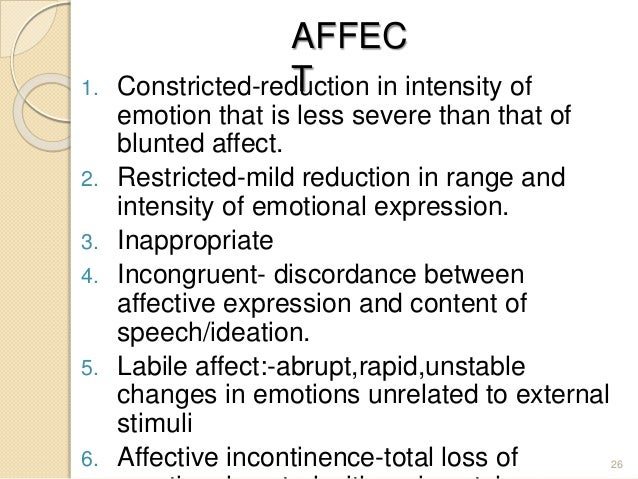

Patients that look older than their stated age may have underlying severe medical conditions, years of substance abuse, or often years of poorly controlled mental illness. If a patient looks more youthful than their stated age, they may have a developmental delay or dress in an age-inappropriate manner. Details to be included are if they look older or younger than their stated age, what they are wearing, their grooming and hygiene, and if they have any tattoos or scars. It can be determined within the first seconds of clinical introduction as well as noted throughout the interview. This is a description of how a patient looks during observation. Each section below will detail the definition, the proper method of assessment, and how that information has a use in the diagnosis and monitoring of mental illness. Cognition can subdivide into different cognitive domains depending on what areas the practitioner determines necessary to assess. For the purposes of this activity, the mental status examination can be divided into the broad categories of appearance, behavior, motor activity, speech, mood, affect, thought process, thought content, perceptual disturbances, cognition, insight, and judgment. The mental status examination is organized differently by each practitioner but contains the same main areas of focus.


 0 kommentar(er)
0 kommentar(er)
